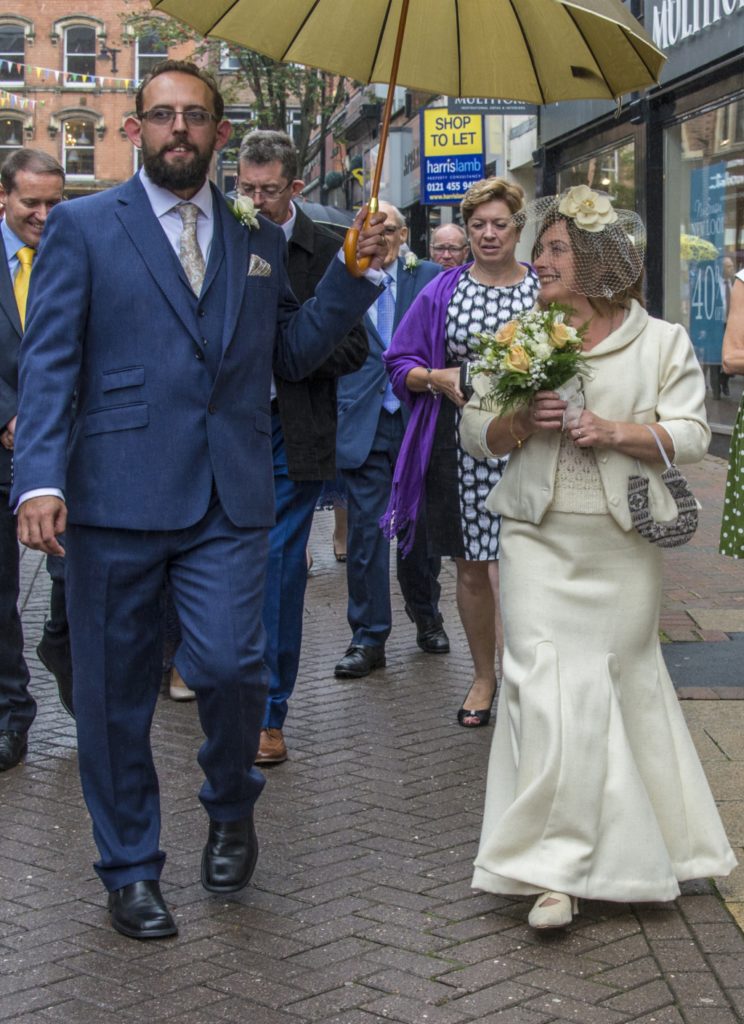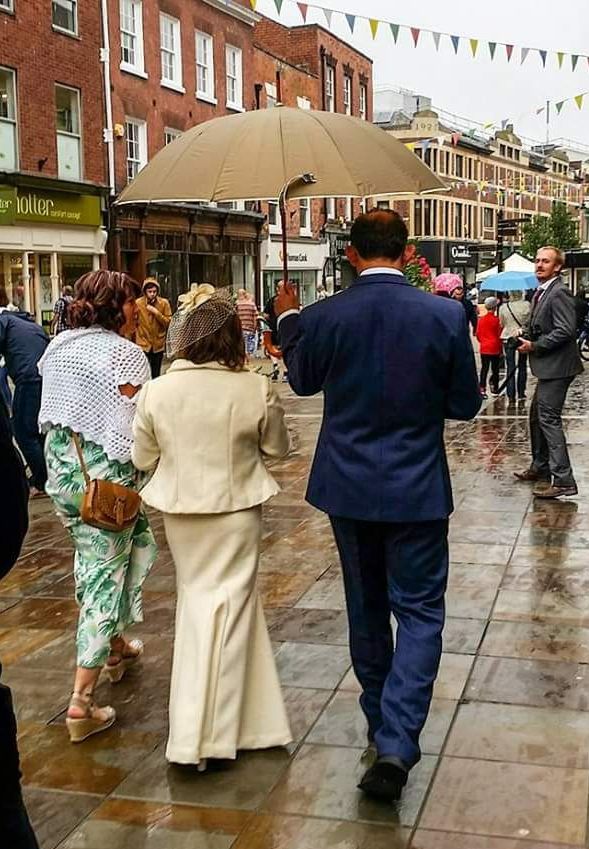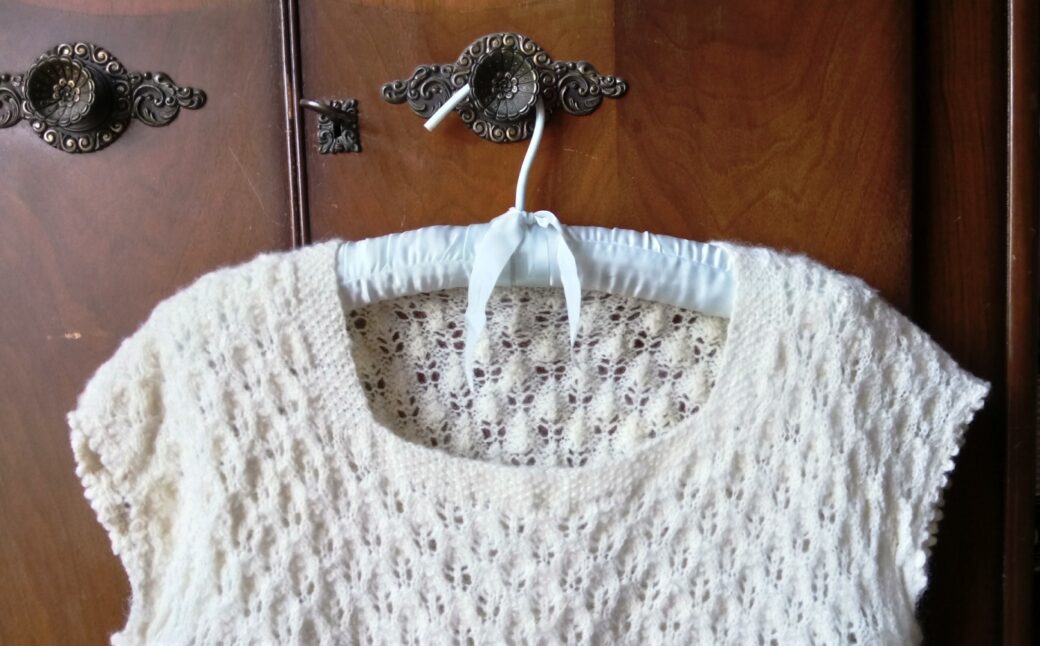Last month I got married. And, what did the bride wear? Why, wool of course – a homemade outfit made in Scottish and Welsh wool. Wool bridal wear – would you think it? Those who know me well would not be the least bit surprised.
Why wool? The simple answer would be that I’ve been a longterm lover of wool. I’ve been a knitter since childhood, and more recently, since learning to spin, a picture of a breed of sheep can turn my eye! What to wear? Wool gave me the answer.
Principles Can Define Your Choice
When I first thought about what to wear I was bedazzled by the possibilities. My Pinterest board expanded; I scratched my head over it a lot. A couple of friends offered to accompany me to bridal boutiques, but somehow I couldn’t see myself in the silk and lace or silk and organza gowns in the shop windows. Not that I don’t think they would look lovely on other brides – I do. They’re just not me, and as I’m not 25 any more, the question of ‘what does the more mature bride wear?’ did cross my mind. So, I decided early on that I wanted to make my own outfit, and never even entered a bridal outfitters. After chasing my own tail for a while, it seemed like limiting the possibilities would be the best thing to do. Fewer possibilities would mean fewer circles to turn in.
Write It Out: Work It Out
A few principles occurred to me along the way, and making a list of these cleared my head of extraneous clutter and gave me a way forward. My principles were that my outfit should be:
- Made from all natural fibres
- Made from British fabrics and fibres
- Be wearable again, in its original form or altered
- Be figure flattering (as far as possible for a less than ideal figure)
The older I get, the more principles I accumulate. They seem to home in and stick themselves to me. So I thought why not work with them?
It was then that I thought about wool bridal wear.

Wool Bridal Wear: Home-bred Materials
Local Ryeland Wool
I had copious quantities of unspun Ryeland fleece bought from a Welsh smallholder, so it seemed a good idea to make a dent in this supply and knit a top. We have so many ancient British breeds of sheep, and this is one of them. It is a breed of sheep local to the Marches – the English/Welsh borderlands 30 to 40 miles west of home. After spinning with this wool I have much to say in praise of Ryeland wool. It’s fine softness and non-itchy qualities make it ideal for a summer lacy top. It was so prized in medieval times, it was known as ‘Lemster Ore’, after the Herefordshire Marches town of Leominster, with which it has become associated.
The top is knitted from a design called ‘Doris’ from Knit Vintage: More than 20 patterns for starlet sweaters & other knitwear from the 1930s,1940s & 1950s. Fabric production in the UK has declined greatly in the past few decades. We can, though, still buy some quality wool fabric, made in Britain from wool sourced from British sheep.
Scottish Shetland Wool
For my suit, I bought a wool fabric from Ardalanish Mill on the Isle of Mull, Scotland. The fabric is cream Shetland Hopsack, so made from Shetland wool. Generally, I gather that their wool comes from Hebridean, Shetland and Manx Loaghtan wool from across the Highlands & Islands of Scotland and occasionally from further South. I like that. I designed the skirt and jacket myself using mostly freehand pattern drafting mentioned in Freehand pattern drafting versus standard pattern drafting.
Re-vamp: Wear It Again
I took some time making this (longer than I expected) but I got there in the end, and had a happy day wearing it. I intend that it will see the light of day again in various combinations. The top and jacket with a 50s print skirt? The skirt needs some thinking about. Full length or shortened? That’s the next question…



You looked gorgeous – and so 'you'! Congratulations again x
Many thanks Katherine! x